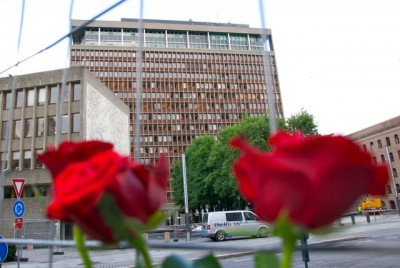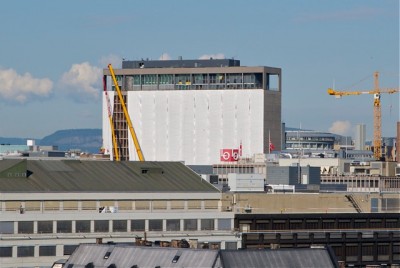The head of Norway’s state agency responsible for historic preservation is demanding that the government’s badly damaged high-rise headquarters be saved from the wreckers’ ball. Jørn Holme claims the building known as Høyblokken, bombed in the July 22 terrorist attacks, is a national symbol of Norway’s post-war history.

“Our professional advice is that the government must preserve Høyblokken,” Holme, who carries the title of Riksantikvaren as head of the state Directorate for Cultural Heritage, told newspaper Aftenposten on Wednesday. “There will have to come entirely new and critical information on the building’s condition for me to to change my mind. I expect that the government will heavily weigh our professional advice in this case.”
Holme said that based on what he and his staff have been told so far from state building authorities (Statsbygg), “Høyblokken can be refurbished.” He said technical and structural examinations have shown that the building is not “critically damaged,” and its integrated artwork is intact.
“So then Høyblokken, in my opinion, should remain standing,” Holme told Aftenposten. “We can’t simply wreck the foremost building our country managed to build in the 1950s.”

The building housed the Justice Ministry and the Office of the Prime Minister, and some employees and high-ranking government officials have said they don’t want to move back into the building. Ministry workers were among those killed in the attack, and the trauma of July 22 will make it difficult for some of their colleagues, now working in temporary offices, to return.
Prime Minister Jens Stoltenberg, whose top-floor office suffered broken windows and other damage but survived better than most, told Norwegian Broadcasting (NRK) on Wednesday that he wasn’t sure whether he wants to move back. He’s also working from temporary offices, in the historic area behind the Akershus Fortress and Castle.
Government officials are currently evaluating a report on the structural condition of the government complex after the bombing, and will present their conclusions to Stoltenberg and other government ministers in early January. Two other newer buildings across the street from Høyblokken, which housed the ministries for health, labour, trade and oil and energy, were severely damaged and seem most likely to be torn down. As newspaper Dagens Næringsliv (DN) pointed out, the buildings from the 1950s and ’60s seemed to survive the bombing better than those built in the 1970s and ’80s.
Rigmor Aasrud, the government minister in charge of renewal and administration, has said no decision will be made on the fate of the entire complex until all professional advice is accumulated and a political evaluation is made.
Newspaper VG reported over the weekend that Aasrud, however, seems to favour tearing the building down and starting fresh, with construction of a modern complex better suited for the next century. Not only would it be easier for workers to return, but it may be cheaper than a renovation because the damage is so severe and the building needs an entire new emergency exit system.
Aasrud didn’t want to comment on information that the structural foundation of Høyblokken is intact. “But it is the case that half the people want the building to stand and half want it to be torn down,” she said. “That means half the people will be dissatisfied.”
She admitted that “I grew up in a small town, and don’t think such concrete buildings are handsome. But I promise that won’t be a determining factor in this.” She stressed that functionality also is important, and noted that it also hadn’t been decided whether the government ministries will still be grouped together, as they had been, or spread out around the city, for security reasons.
A spokesperson for the ministry in charge of cultural heritage, headed by Erik Solheim as minister for the environment, said that Holme’s advice will be evaluated along with other advice.
Views and News from Norway/Nina Berglund
Please support our stories by clicking on the “Donate” button now:

